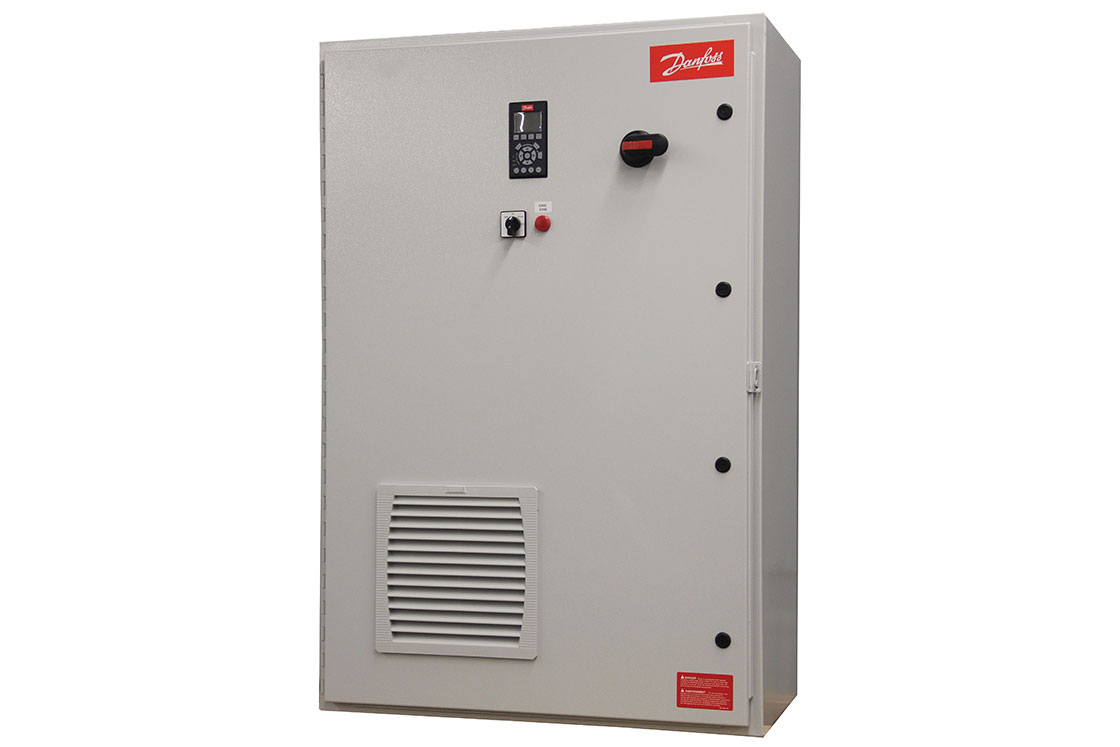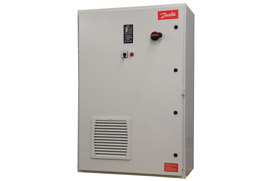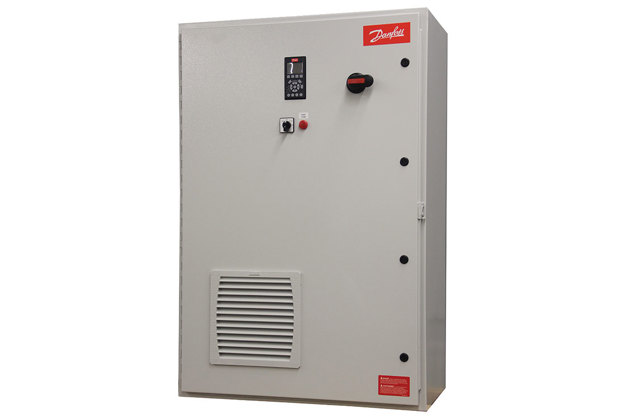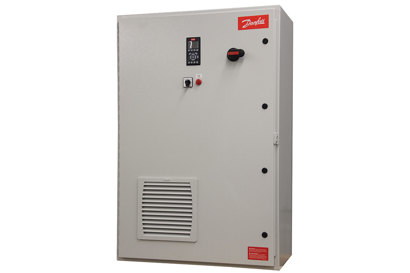
Packaged drive solution offers increased flexibility by reducing harmonics at wide range of load levels
Danfoss’ VLT® Preferred Harmonic Drives (PHD) offer optimum harmonic mitigation and input power factor performance. Their ability to accomplish this at full load and substantially reduced loading from both utility line or standby/backup generator power makes them an ideal solution for HVAC fans and pumps.
The key to the design of this low harmonic drive solution is a specialized input power section that has the unique capability of adapting to load changes. Traditionally, low harmonic drives need to run at or above 80% load (power) to provide any reasonable level of reduction in Total Harmonic Distortion or “THiD”. But in many instances, the drive running an HVAC fan or pump will most likely be called on to run at reduced speed. While reducing the speed provides tremendous energy savings, it is still important to keep harmonic distortion under control. The adaptive feature embedded in the VLT® PHD panel keeps THiD levels below 5% even when the input power load is reduced to 60% of the drive rated capacity.
The VLT® PHD is also generator friendly. Historically a generator would have to be oversized to handle the high harmonic current draw at heavy load. While a low harmonic packaged drive solves this problem, it often creates another problem - leading power factor at lightly loaded conditions. This leading power factor condition (also known as capacitive current) is typical of many other low harmonic drive designs and may cause problems when running at light load, since most power generators do not operate well with leading power factor and may fault or go unstable with as little as 20% leading current.
The PHD solution provides two important added benefits that help reduce leading power factor. First, the adaptive input power circuit allows for a much lower level of capacitance at the line input. This in turn results in very low leading power factor over all load conditions. Second, the PHD drive panel has a built-in cut-out circuit interlocked with the drive control board to disconnect filtering capacitors and virtually eliminate leading power factor at very light and no loads operating conditions.
These features prove to be very beneficial when the drive is required to run on generator power as the need to oversize the generator is greatly reduced and input power factor is kept near unity across the entire operating range, generating the maximum amount of power for each amp of current draw.
By providing harmonic compliance at the input terminals of the drive, this solution also does a better job of helping customers meet the requirements of IEEE-519, the governing document that sets the standard for allowable harmonic distortion limits.
“Danfoss’ optimized PHD drive panel with adaptive technology and input power factor control is a low harmonic drive panel design that achieves better overall system compliance even when the fan motor and drive might be oversized, or the output power required is far less than the drive’s total capacity,” said John Streicher, regional product manager at Danfoss Drives. “Keeping distortion levels below these limits goes a long way to reduce transformer and across-the-line motor heating and unwanted excess current, which extends equipment life and helps prevent interference with other equipment on the line. With generator-friendly input power factor control, overall installation and infrastructure costs can be minimized.”
Learn More...
-
if (isSmallPicture) {


 VLT® PHD-102 Preferred Harmonic Design
VLT® PHD-102 Preferred Harmonic DesignThe VLT® PHD-102 Preferred Harmonic Design (PHD) is a full-featured, HVAC dedicated drive solution when conformance to IEEE-519 is required, even at the drive terminals.



